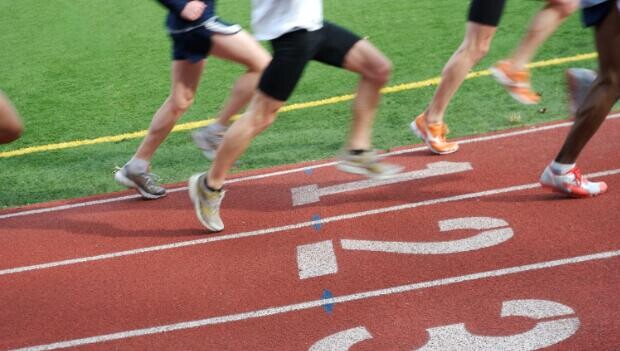Running News Daily
Running News Daily is edited by Bob Anderson. Send your news items to bob@mybestruns.com Advertising opportunities available. Train the Kenyan Way at KATA Kenya and Portugal owned and operated by Bob Anderson. Be sure to catch our movie A Long Run the movie KATA Running Camps and KATA Potato Farms - 31 now open in Kenya! https://kata.ke/
Index to Daily Posts · Sign Up For Updates · Run The World Feed
Should I try to improve my running distance or speed?
New runners are often confused about how to set goals for speed and distance. If you are a beginning runner, you may wonder if you should improve your distance first or if you should train to get faster. The short answer: Train for distance first.
It's better for you to start by building an endurance base. That means that you increase your aerobic capacity first. You increase your mileage so that longer runs are more comfortable. As you build up your endurance, your speed will also improve.
Once you have established some strength and stamina for going the distance, you can train for distance and speed at the same time. Varying your routine by mixing distance runs with shorter, faster workouts can actually help ensure that you are getting the most out of your training and minimize your chances of injury.

Distance vs. Speed for New Runners
As a new runner, you may be tempted to get faster first. Certainly, better race times are satisfying. But if you participate in speed training before you build a strong endurance base, you put yourself at risk for injury.1

Gradually building your distance as you begin your training is a good way to ensure that you are building the strength and aerobic capacity you will need to start training harder and faster. And if you want to prepare for a race such as your first 5K, it makes sense to go for distance before you start to build speed. After all, it doesn't matter much if you are fast but lack the stamina to finish the race.
When you are ready to add speed, begin with some basic speed training via high-intensity intervals. You might do 200-meter, 400-meter or longer repeats that require you trun at paces faster than your current pace.
Distance Training for New Runners
To build your endurance base, follow these guidelines to make the most of your training time.
Use a Run/Walk Strategy
Don't put pressure on yourself to run the entire length of your desired distance. By doing a run/walk combination, you'll be able to cover more distance and you'll still get a great workout. And you'll build the fitness—and confidence—you need to run longer without walking.
Run at a Conversational Pace
One of the most common reasons why beginner runners stop running before they reach their goal distance: They're running too fast. When you first start running, you should be running at a conversational pace. That means that you can very easily talk in complete sentences while running. If you're gasping for air, you're definitely going too fast.
Some beginning runners are actually physically fit enough to run a certain distance, but they don't have the confidence or mental strength to push themselves farther. In many cases, it's simply "mind over matter." Try to distract yourself by playing mind games, choosing new running routes, or running with other people.
Speed Training for New Runners
Once you have established a solid endurance base, you can start incorporating more speedwork into your training routine. But as with adding distance, it is important to ease your body into speed training gradually.
Running is a high-impact sport. Adding distance or speed to your routine puts a lot of strain on your muscles, joints, and bones, as well as your heart and lungs. If you start tackling too much too soon, you run the risk of getting hurt, fatigued, or burned out.
After you've been running regularly for four to six weeks and have a nice base, you can start by adding strides into one of your weekly runs. You can also try picking up the pace towards the end of one of your runs. After three to four weeks of this, you can start to add tempo runs, fartlek runs, or interval workouts.
Fartleks
One of the best ways to start increasing your speed, fartleks involve running slightly faster for about two minutes before easing back to your normal pace to recover for about four minutes. Repeat these intervals several times throughout your run.
Tempo Runs
This type of run involves starting at an easy pace to warm up, then moving into a speed that is about 10 seconds slower than your race pace for the next 20 to 25 minutes of your run. The goal of this pace is to increase your anaerobic threshold, a critical component for boosting your speed.
Interval Runs
In this type of speedwork, you add short bursts of faster running with recovery intervals at an easier pace.
Mile Repeats
These are a standard for improving your run time and are easy to do. Start by running a mile at a fast pace, then slow down for a recovery period. After about a half-mile at a recovery pace, pick back up for another faster-paced mile. Always be sure to include a warm-up and cool-down before and after your run.
Adding speed work to your runs is a great way to improve your fitness, strength, and aerobic capacity. If you are new to running, it is essential to start by building a solid endurance base before you start working on your speed. Eventually, you can incorporate both speed and distance training, which can be a great way to make your runs more fun and rewarding.
by VeryWell Fit
Login to leave a comment




